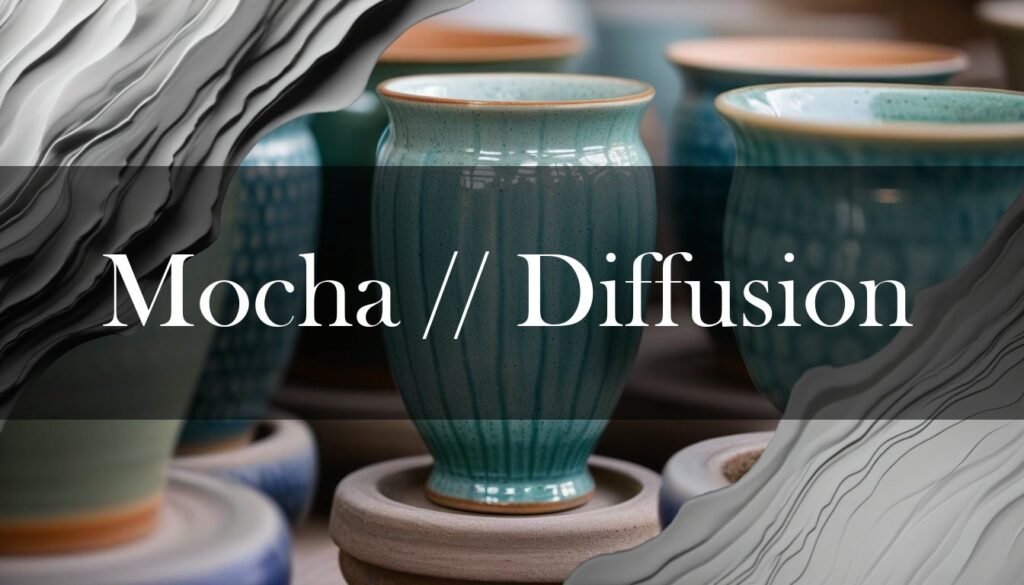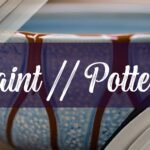Mocha diffusion, a mesmerizing technique that brings tree-like patterns to life on pottery, is all about the dance between acidic solutions and alkaline slips. Think of it as a little bit of pottery magic! The clay you choose is your stage, so let’s talk about which ones will give you the best performance.
While mocha diffusion can be used across various firing temperatures, and is traditionally applied to both red and white earthenware, the texture of your clay is key. You’ll want to avoid anything too sandy or groggy, as these can be prone to cracking with the extra moisture from the slip. Instead, look for a smooth clay body, preferably one with a good amount of ball clay or plastic kaolin like Edgar Plastic Kaolin (EPK). These clays offer the plasticity and smoothness you need for the best results. One potter mentioned having success using Laguna B-Mix as a base, instead of a more traditional recipe.
Here’s a great video by Ben Stout Ceramics showing the process from start to finish:
Now, let’s get into the recipes for creating those magical mocha diffusion slips! A common base slip recipe involves mixing 50% ball clay and 50% kaolin with water until you reach a smooth, creamy consistency—think easily spreadable, but not too runny. The real magic happens with the “mocha tea,” your acidic solution. A basic recipe consists of 100 ml of water, 10 ml of vinegar (acetic acid), and 1-2 grams of your chosen colorant. For a classic black mocha tea, try 1.5 grams of black iron oxide! Remember, testing is key. Before you commit to a whole piece, experiment with different ratios and application techniques on test tiles to find what works best for you. You can unlock even more magic with the right glazing techniques. Don’t forget to explore ceramic surface design for more inspiration!
For inspiration and further guidance, refer to this article on mocha diffusion recipes.
For those of you ready to take your mocha diffusion skills to the next level, there are many ways to create more complex designs. Instead of traditional tobacco juice, you can explore other acidic solutions like apple cider vinegar, lemon juice, or even coffee! Different colorants can also lead to a range of hues and intensities. While metallic oxides like manganese dioxide and iron oxide create browns and blacks, using carbonate forms like cobalt carbonate can give you more vibrant and detailed patterns because of their lighter density and greater surface area. And don’t forget the application itself! Fine brushes allow for precise control, while dripping or dragging a string or feather soaked in the acidic solution can create beautifully organic, flowing patterns. The possibilities are endless!
Explore advanced application techniques in this article on mixing and applying dendritic slip.
Keep in mind that environmental factors, like temperature and humidity, can affect your results. Ideally, you want a moderate temperature (around 65°F to 75°F) and a relative humidity of 50-60%. And of course, safety first! Always wear gloves and a mask when working with the materials, and make sure your workspace is well-ventilated. With a little practice and experimentation, you’ll be creating your own incredible mocha diffusion masterpieces in no time.





